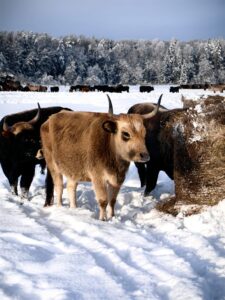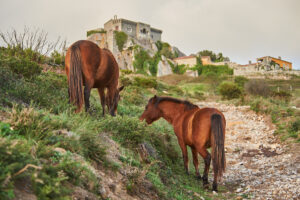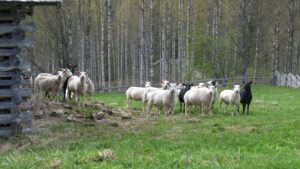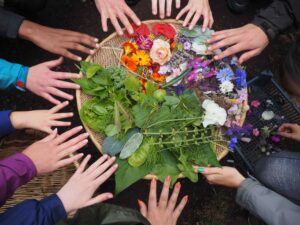Uniting Forces for Nature Restoration in Protected Areas – 4 new case studies from across Europe
The Penpont Project Partnership: celebration of diversity. Photo: Action for Conservation
Four case studies of young people, farmers, breeders, landowners and nature conservationists working together on nature restoration.
Uniting Forces for Nature Restoration in Protected Areas
Agriculture and nature conservation are often seen as competing interests, but agriculture practitioners and Protected Areas managers can and must be allies. Farmers, landowners, local stakeholders and young people have come together to unite forces for nature through nature restoration activities. Domesticated animals, such as horses and cattle, are put to work in nature restoration practices resulting in revival of natural conditions.

All-weather rewilded species @Kemeri National Park
Case Study 1: Wild Grazing in Ķemeri National Park, Latvia
In 2006 and 2018, large-scale wetland restoration projects were implemented in Ķemeri National Park. These projects included the meandering of two meliorated rivers, setting the stage for wild pasture development. In 2006, the first Konik Polski horses and Auroxen (de-domesticated Heck cattle) were introduced to the restored floodplains. Over time, these wild herds have grown to over 400 individuals, developing natural herd structures, interacting with other wildlife (including large predators), and shaping their environment. With over 20 years of experience, the project has provided valuable insights into natural grazing, highlighting both its ecological benefits and legal challenges.
Full Case Study
Horses grazing in the landscape @Cascais Ambiente
Case Study 2: Rewilding for Landscape Management in Sintra-Cascais Nature Park, Portugal
This rewilding initiative aims to reintroduce species of locally extinct wild herbivores and their national proxy breeds to function as natural landscape management tools. By reducing the risk of rural fires and promoting ecological restoration, the project is fostering self-sustaining ecosystems. The Functional Herbivory Plan (FHP) determines the specific composition of herbivores—species, breeds, and densities—for each intervention area, tailored to the vegetation and local conditions. Currently, the plan is being implemented over 2,270 hectares, with two monitored areas managed by Cascais Ambiente. These areas are assessed to evaluate the effectiveness of introduced herbivores in managing biomass growth and supporting biodiversity.
Full Case StudyCase Study 3: Sheperd Weeks in Finland

Photo Credit: Metsähallitus / Heidi Kilpeläinen
The Shepherd Weeks are unique way to organize landscape management and conservation efforts. The concept is a combination of nature conservation and management, strengthening relationships between people, nature and landscapes, and enjoying an unforgettable holiday experience.
During the Shepherd Weeks, the landscapes and nature are managed in an exemplary and effective manner that respects traditions and benefits all parties involved. The sheep owners and sheep gain access to quality pastures that may be hard to find, and the shepherds help the farmers with caring for and keeping an eye on the animals. The operations also strengthen the volunteer shepherds’ relationship with landscapes and nature.

The Penpont Project Partnership: celebration of diversity. Photo: Action for Conservation
Case Study 4: Youth-Led Conservation at Penpont Estate, Wales
Penpont is a 2,000-acre estate in the Bannau Brycheiniog, Wales, home to the Hogg family, tenant farmers, foresters, and artists. Since 2019, the Penpont Project has aimed to achieve bio-cultural restoration and set a global gold standard for youth-led environmental action. Co-managed by a Youth Leadership Group (YLG) of twenty 12-18-year-olds, along with Action for Conservation (AFC), Penpont Estate, and tenant farmers, the project employs eco-cultural mapping tools to visualize past, present, and future land relationships. Developed by indigenous communities, these maps make visible the deep-rooted knowledge and connections to the landscape. Now three years into a major action plan, the project is a beacon of collaboration between youth, conservationists, and land managers.
Full Case StudyThese examples illustrate that nature restoration can be achieved by working together and using diversified tools to achieve the results.
Do you also have an example to share? Send us your case study and join the diversity of voices inspiring and promoting good practices across the EUROPARC network!